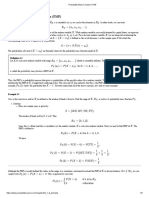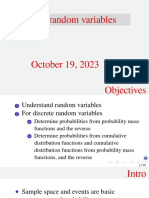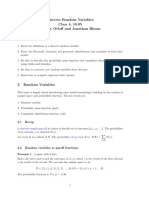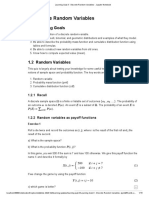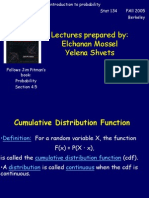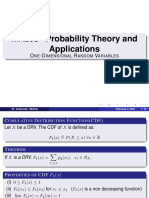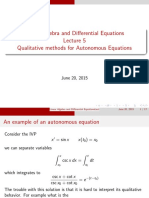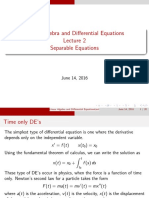0% found this document useful (0 votes)
51 views7 pagesExamples of Mass Functions
Section 3.2 introduces probability mass functions (PMFs) and cumulative distribution functions (CDFs) for discrete random variables. It provides examples of PMFs for situations like a customer purchasing a laptop or desktop. It also gives the CDF for a PMF and examples of using a CDF to calculate probabilities for a random variable falling within a range of values.
Uploaded by
Roumen GuhaCopyright
© © All Rights Reserved
We take content rights seriously. If you suspect this is your content, claim it here.
Available Formats
Download as PDF, TXT or read online on Scribd
0% found this document useful (0 votes)
51 views7 pagesExamples of Mass Functions
Section 3.2 introduces probability mass functions (PMFs) and cumulative distribution functions (CDFs) for discrete random variables. It provides examples of PMFs for situations like a customer purchasing a laptop or desktop. It also gives the CDF for a PMF and examples of using a CDF to calculate probabilities for a random variable falling within a range of values.
Uploaded by
Roumen GuhaCopyright
© © All Rights Reserved
We take content rights seriously. If you suspect this is your content, claim it here.
Available Formats
Download as PDF, TXT or read online on Scribd
/ 7







